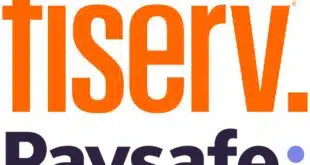Seven months after VeriFone Systems Inc. launched Sail, its mobile-payments platform for micro-merchants, the San Jose-based point-of-sale terminal maker and payments software provider is stepping back from its role as an acquirer for Sail merchants and will instead revert to its traditional role of solutions provider. The announcement from chief executive Doug Bergeron late Thursday during the company’s fourth-quarter teleconference with analysts runs contrary to reports elsewhere that VeriFone is exiting mobile payments.
Instead, VeriFone plans to provide Sail-branded solutions to banks and independent sales organizations, which it says have now stepped up in sufficient numbers to sign micro-merchants and process transactions for them. Previously, VeriFone handled that role itself, apparently through its little-known ISO, VeriFone Merchant Services LLC, to fill what VeriFone called a void created by banks and acquirers slow to move into the micro-merchant channel. Instead, non-bank tech firms such as Square Inc. and Intuit Inc.’s GoPayment service dominate the niche. (VeriFone Merchant Services feeds its transactions to processor Vantiv Inc., and its sponsor bank is Fifth Third Bank.)
VeriFone’s change marks a retreat from merchant acquiring, which had been a new role for the firm, and a reversion to its traditional, profitable role as a technology supplier to ISOs, acquiring banks, and large merchants. During a question-and-answer session with analysts, Bergeron said that one of the reasons San Jose, Calif.-based VeriFone is exiting merchant acquiring for micro-merchants is the thin margins earned on transactions. “Acquiring for these merchants is unprofitable,” he said. “The assets that we have developed around customer acquisition, risk management, and customer billing will be divested.”
Bergeron added that he believes successful acquirers for micro-merchants will be the ones that use acquiring as a loss leader to sell value-added services. “But we don’t want to be the company that finds and pulls micro-merchants into acquiring and have to manage the risk on top of it,” he said.
Instead, VeriFone says it will focus on providing Sail-branded products, as it did last month with the introduction of Sail EMV, a chip-and-PIN mobile-payments solution for small and medium-size merchants marketed through acquiring partners.
Launched in May, Sail was a direct-to-user payment solution intended to provide micro-merchants a single source of end-to-end payment services. VeriFone offered two pricing plans, a flat 2.7% per transaction for purchases initiated through a Sail card swipe on a mobile device, or monthly subscription rate of $9.95 plus a 1.95% per-transaction fee.
Meanwhile, VeriFone posted revenues of $485.4 million in the fourth quarter ended Oct. 31, up 18% from $410.7 million a year earlier. Net income fell 86% to $27 million.
North America was a big sales driver, posting $143.3 million in fourth-quarter segment revenue, a 25.5% increase from the same period a year earlier. “Q4 was our highest North America revenue quarter in history,” said Bergeron “As a result of our investments in new technology and solutions over the past two years, we now believe that North America will be a strong contributor to the company’s growth for the next couple of years.”
Helping to fuel North America’s growth was that 26% of the U.S. terminals shipped in the fourth quarter were enabled for the Europay-MasterCard-Visa chip-card standard, which the card networks plan to use to supplant magnetic-stripe cards and which terminal makers see as a big opportunity for new sales. In addition, multilane retail sales reached record levels with more than 50% year-over-year growth. Revenue from petroleum merchants for the quarter increased 8% year-over-year.
Revenues from VeriFone’s North American Small Businesses division grew just 1% year-over–year, with distributor inventory levels dropping to their lowest level in several years. U.S. sales were up 11% on a year-over-year basis, but lower sales into Canada offset most of the gain.
Looking ahead, petroleum retailer Valero has agreed to pilot VeriFone’s Paymedia software at corporate-run stations in the Austin, Texas, area. “This represents a 3,500-pump opportunity if the pilot is successful,” said Bergeron, who added that couponing is now being rolled out to VeriFone’s Paymedia customers.
VeriFone has also begun facilitating the sale of lottery tickets at the pump at select gas stations in Minnesota. The company expects to expand this initiative to three to five more states during fiscal 2013.
Europe remains VeriFone’s largest market with $203.9 million in segment revenue during the fourth quarter. Although revenue during the quarter was up 36% from the same period a year earlier in part because of VeriFone’s acquisition of former rival Hypercom Corp., which had a strong European business, it remained essentially flat from the previous quarter. “[Europe] remains a challenging environment due to lingering macroeconomic difficulties,” said Bergeron.





